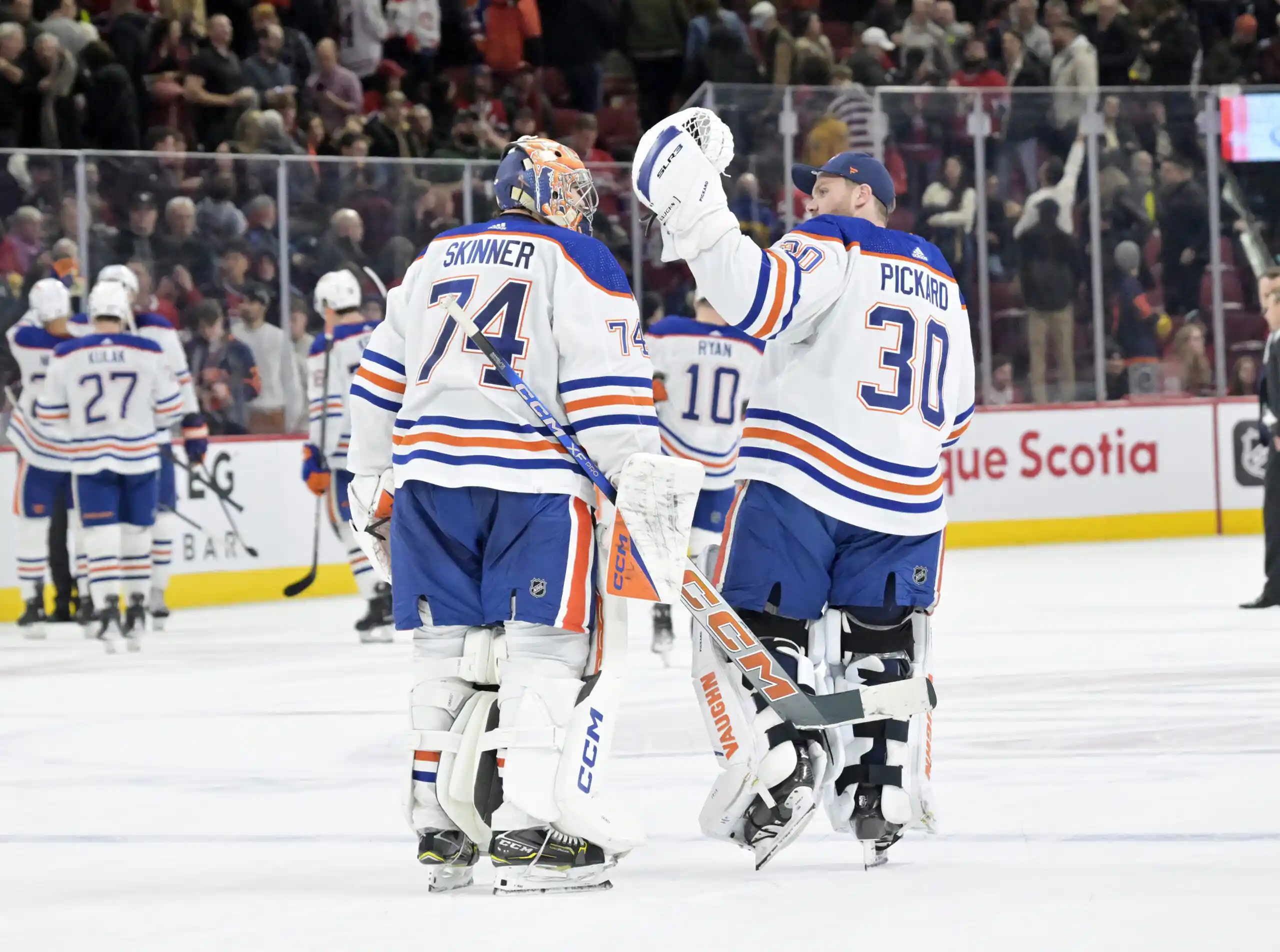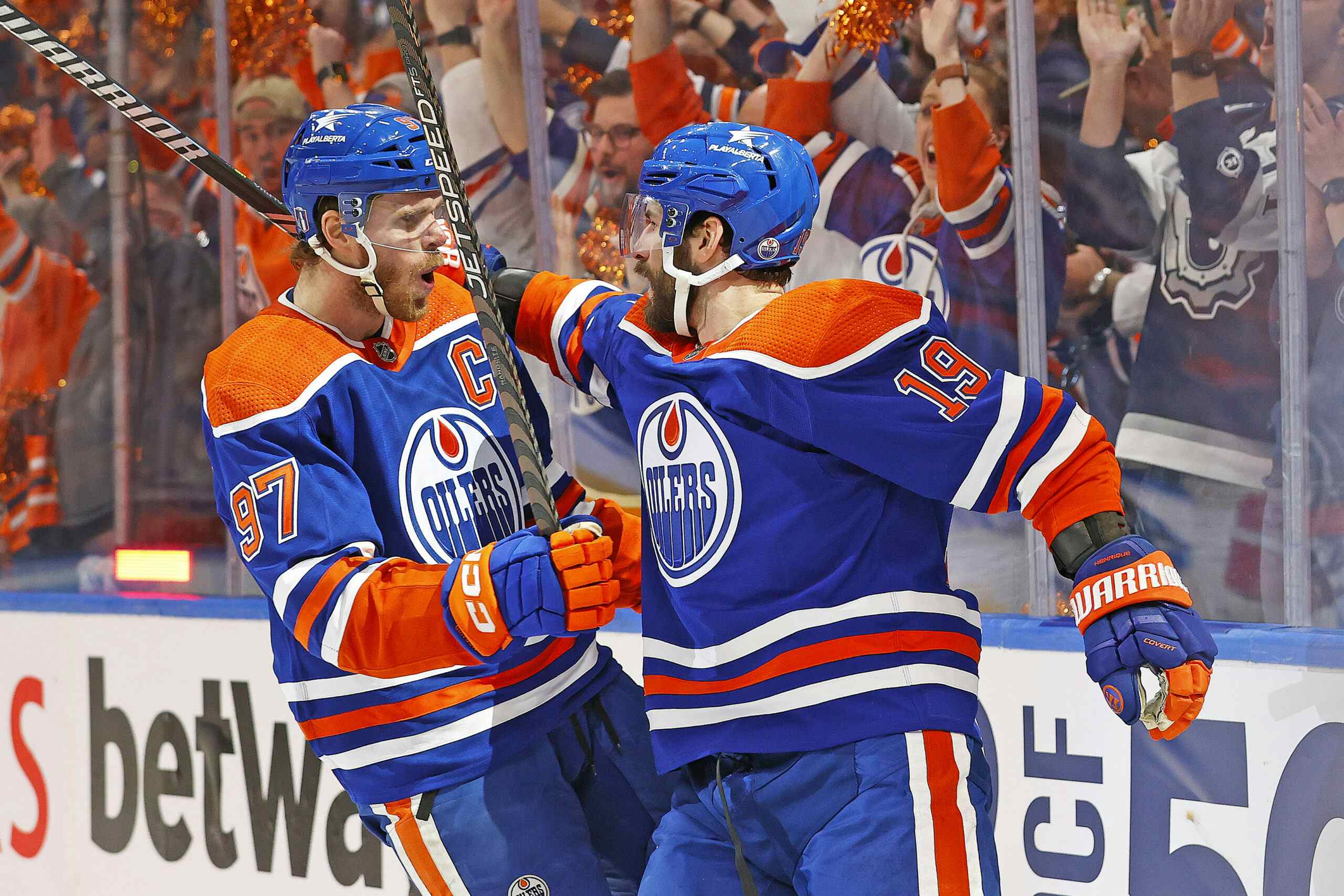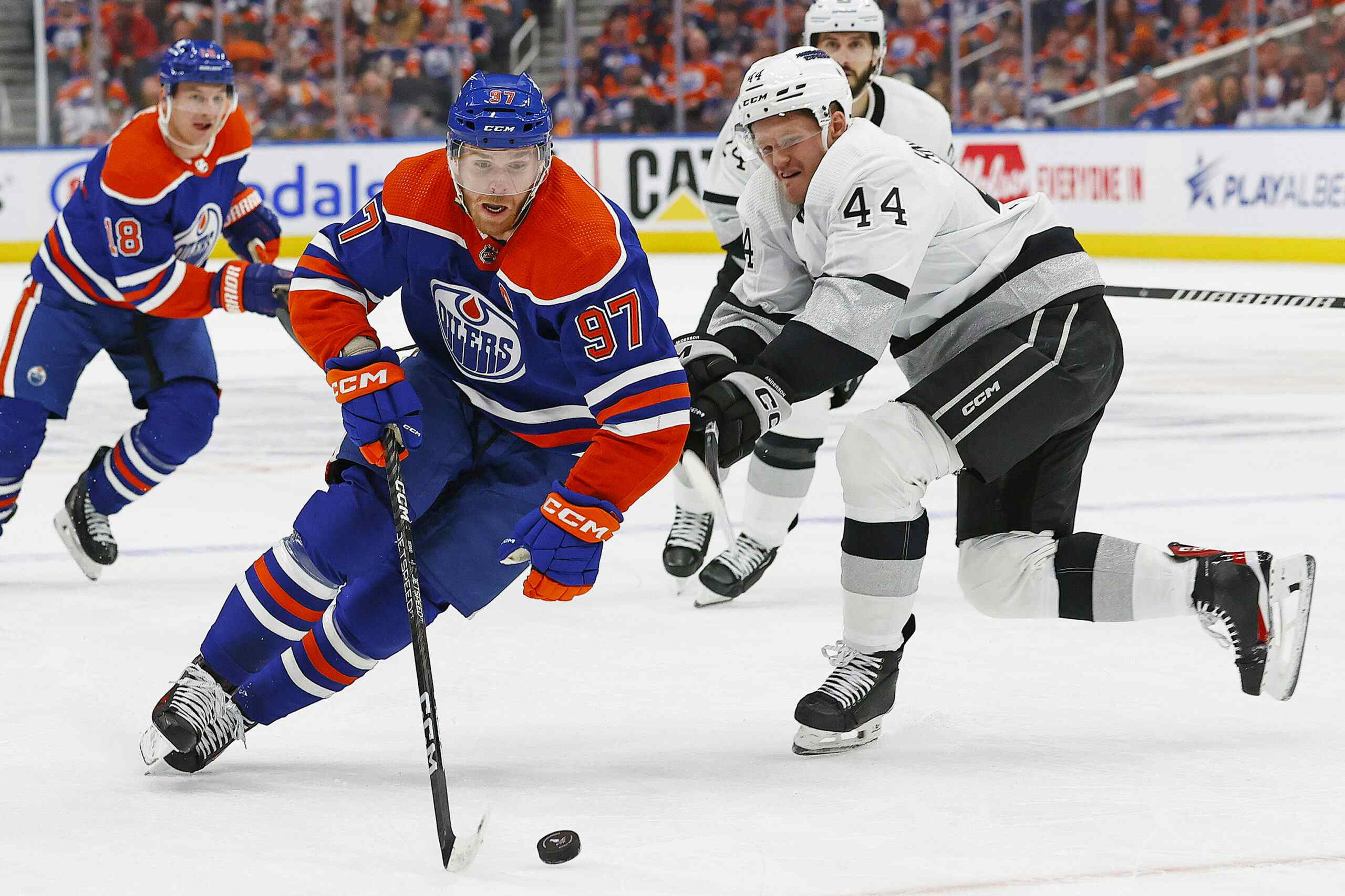The Edmonton Oilers are getting a little light on prospect forwards

It is a fixture in conventional wisdom that the Oilers are heavy on talented forwards, while weaker on defense and in net. Looking at the NHL roster, this is undeniably true. However, looking at the Oilers’ farm system, the case is reversed: they’re very strong on defense and in net, and anemic up front.
The Personnel
We’ve talked about the Oilers’ roster of defensive prospects at length before, and even with the subtraction of Jeremie Blain it’s a very good set of players. There are at least four guys with the potential of playing top-four minutes in the NHL and a bunch of others who could have careers. Obviously they won’t all make it, but at this point it’s clearly an organizational strength.
In net, the Oilers are also in pretty good shape, and they managed it without spending high draft picks (the way they did back when Devan Dubnyk and Jeff Deslauriers were in the system together. Tyler Bunz has improved by leaps and bounds since draft day and has done as much as a junior goalie can. Next year, Bunz will join Olivier Roy in the professional ranks; Roy had a rookie season in Stockton (ECHL) that compares very favourably to Devan Dubnyk’s first year with the same team. Finnish goalies Samu Perhonen and Frans Tuohimaa didn’t have great years but are still players of interest.
Up front, things are a little sketchier. Magnus Paajarvi and Teemu Hartikainen are very close to full-time NHL employment, but after that pair things fall off. Anton Lander is a player the organization appears to be bullish on, but offensive production is a serious question mark – in 28 combined regular season/playoff games after his AHL demotion, he managed a total of three goals and nine points. Aside from Lander, Tyler Pitlick has excellent physical gifts but struggled to score, Curtis Hamilton struggled to score, Philippe Cornet has 60 points in 127 career AHL games, and Tobias Rieder has been very impressive but is still playing junior hockey. Things go downhill from there.
Now, lest I be accused of a starkly pessimistic outlook, it’s only fair to note that the Oilers have some young NHL forwards – Ryan Nugent-Hopkins, Taylor Hall, Jordan Eberle, Sam Gagner – with scoring ability. They’ll add another one in Nail Yakupov if they draft him first overall later this month.
So What?
Given the group of forwards the Oilers have on the NHL roster, does this even matter? There are only so many roster spots to be had and with the four guys listed above plus Yakupov, Hartikainen and Paajarvi, things are covered, right?
The reason it matters is actually quite straight forward: because of the salary cap.
Taylor Hall and Jordan Eberle will see their entry level deals expire in 2013. Ryan Nugent-Hopkins’ contract will be up in 2014. Whoever the Oilers take first overall this year will see his deal end in 2015. Over the last few years, when players of this caliber see their contracts expire, they’ve typically signed for ~10% of whatever the salary cap is at that time. Kane and Toews inked for a little over 11% each of Chicago’s cap space, Perry and Getzlaf were both around the 10% mark, Kopitar signed at 12%, and so on. The best example of a bargain contract of five years or more is John Tavares – his $5.5 million represented just 8.55% of the salary cap when he re-upped with the Islanders.
The point of all this is that the Oilers should be planning for between 35-40% of their salary cap space to be taken up by the contracts of Hall, Eberle, Nugent-Hopkins and whoever they take first overall. The cap may go up and drive that number down a little, but even so those players will eat up a huge portion of Edmonton’s money. Some of that will be compensated for by expiring contracts (Ales Hemsky, Shawn Horcoff) but then a bunch of that money will need to go into paying for a much-needed top defensemen. Then of course players like Gagner, Jeff Petry and Ladislav Smid will also get paid.
We can argue over the specifics, but the fact is this: once those entry-level contracts expire, the Oilers are going to need to be an efficient team in terms of getting performance for bottom dollar elsewhere on the roster. We’ve seen what happens in Chicago when deals expire – the Blackhawks have been leaking talent ever since their Cup win, despite the fact that they managed to get both Marian Hossa and Duncan Keith signed to long-term contracts with bogus years on the end of them (deals that would not likely be approved by the NHL today).
When it happens, the Oilers will need cheap, outperforming contracts to stay competitive (assuming that they get competitive between now and then). They may be able to find some of that money in net, the way Detroit has, though Edmonton has yet to embrace that model. For the most part, the learning curve of young defensemen means that it’s more difficult to get outperformers on entry-level deals (look at how many years it took Smid to really emerge as a top-four option), however, so that means they’ll need to land cheap supporting forwards.
For the next few years, when possible it is going to make sense to pick forwards early if there isn’t a clearly superior blue liner. The guys drafted this year and in 2013 will be the ones pushing for NHL jobs in 2015 and 2016. If the Oilers can restock their forward prospects over the next two drafts, it might go a long way towards keeping the team competitive when the elite talent gets expensive.
This week by Jonathan Willis
- How much did Nail Yakupov’s knee injury impact his offensive numbers?
- Should the Edmonton Oilers talk to San Jose about Douglas Murray?
- Big decisions: Jarret Stoll and Matt Greene for Lubomir Visnovsky
- Is big forward Ludvig Rensfeldt worth drafting?
- Red Line Report: "We think Edmonton is open to shopping that top pick."
- Should teams build from the net out, like the Kings did with Quick?
- Jon Cooper, the most interesting man in hockey
- Congratulations to the 2012 Los Angeles Kings
- Craig MacTavish returns to the Edmonton Oilers
- Should the Oilers pursue Guillaume Latendresse?
Recent articles from Jonathan Willis





